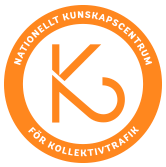Socio-Economic Benefits of Elderly Mobility
Socio-Economic Benefits of Elderly Mobility
SEBEM-GIS project provides new evidence in the area of public transport planning, showing how the (older) user’s perception of distance to the system may be influenced by their health and socio-economic characteristics. Previous research showed that living closer to bus stops could be a factor promoting a healthy and active lifestyle. However, most of the studies relies on self-reported measures of distance, which might be biased by several confounders. Therefore, in this research project self- reported distances among study participants were compared to the actual ones, exactly computed using routing algorithms. We found that several variables including older age, female gender, living alone and worse health status are associated with an over-estimation of bus stop distance. People who use public transport daily and are satisfied with the walking opportunities of the neighborhood tend to underestimate bus stop distances. From a policy perspective the results are useful for planning of transport services, showing that multiple factors (e.g. targeted communication campaigns and/or restyle for improving accessibility of the neighborhoods) could be addressed to promote a wider use of public transport among older people, ultimately supporting active and healthy lifestyles. In parallel, during the project we realized a feasibility study with the aim to develop an analytical GIS-based model/method to plan and operate flexible mobility services attractive for the older travelers and, at the same time, efficient and financially sustainable over the long term. A new planning indicator, demand density, has been defined and tested in several municipalities. An attempt has been made to correlate this indicator to usage and performance of actual mobility services. The indicator has been considered useful for planning purposes and potentially it could be tested as an indicator for cost-efficiency of the transport supply in the future. The preliminary results of this study has already been put to practical use in actual planning cases (in Västerås and Södermanland). The feasibility study could be further developed to verify the preliminary findings and to establish a more complete planning model.
